|
| |
ENH440 BIOSTATISTICS
REVIEW : PAIRED AND UNPAIRED DATA
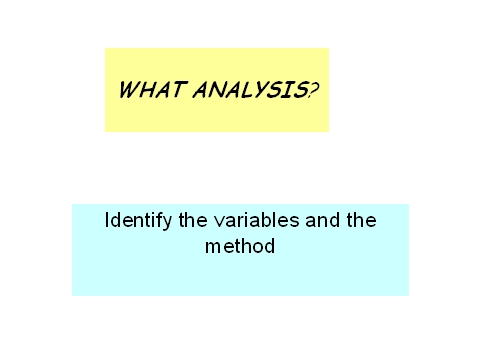
In the following examples,
identify the independent variable(s), the dependent variable(s), whether they
are categorical or continuous, and the method of
analysis: t-test for paired data, t-test for unpaired data, or 1-way ANOVA.
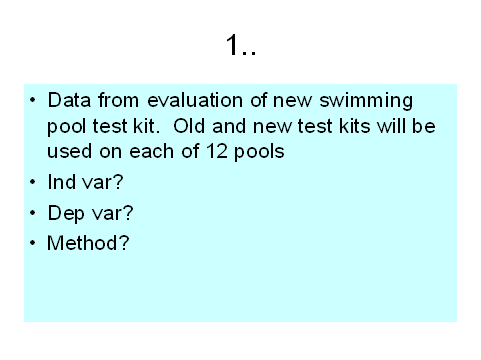
Example 1:
Indep var: test kit (old/new); Dep var: Chlorine residual.
Note that
for EACH pool there are TWO different tests made.
This means that
at the end of the data collection, there will be a pair of
samples for each
pool. The measurement for the old test done on pool #1
must naturally go
with the measurement for the New test done on the same
pool. The
data are therefore PAIRED and the basis of pairing is the pool.
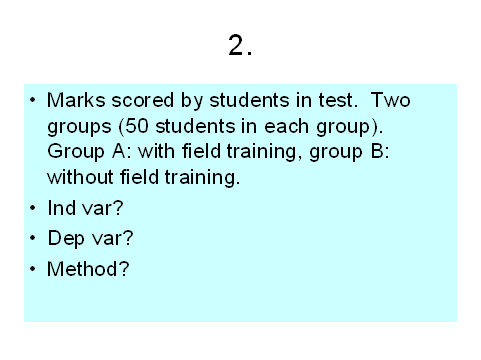
Example 2:
.Indep var: training (yes/no); Dep var: marks.
There are simply
50 students in one group and 50 in the
other with no
relationship between the first ones of either groups.
These are
UNpaired data
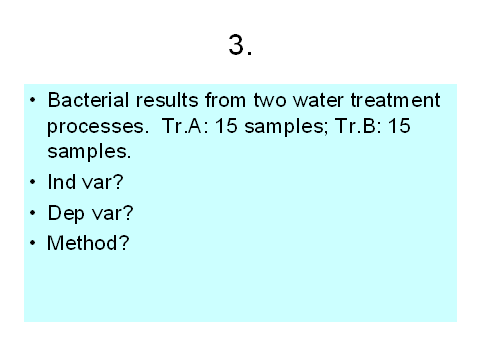
Example 3:
Indep var: treatment method (A or B); Dep var: bact result.
There are 2
treatment processes. But there is no natural
link or
connection between the top listed sample from A and the top
listed sample
from B. They are simply two groups of UNpaired data.
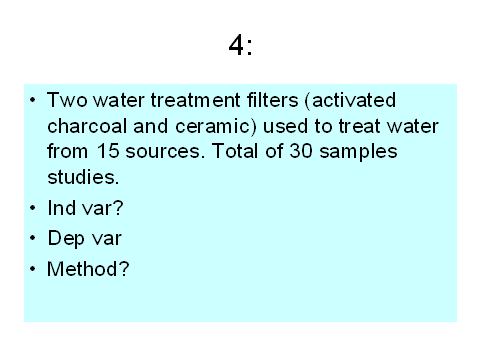
Example 4: Indep
var: filter (ac/ch); Dep var: water quality parameter.
In this instance,
two filters are used for each source of water, meaning
that the results
are paired on each water source
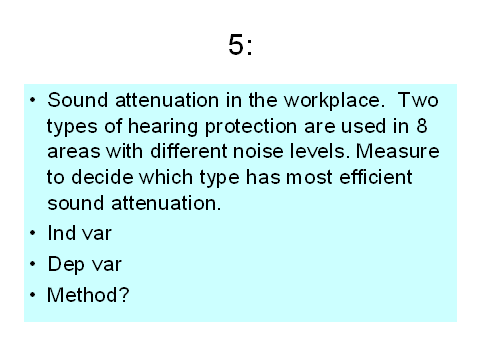
Example 5: Indep
var: type of protec (A or B); Dep var: sound reduction.
Note the two
measured results for each work area. The data
are PAIRED on the
work area.
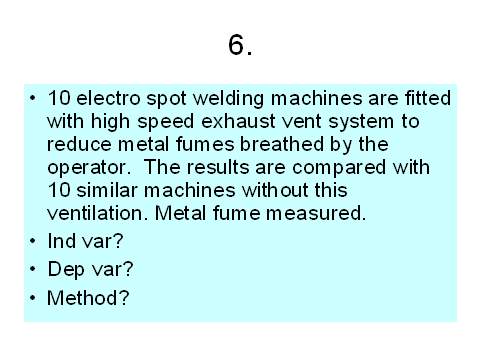
Example 6:
Indep var: with or without system; Dep var: metal fume measure
Ten with and ten
without. UNpaired data

Example 7:
Indep var: before/after; Dep var: metal fume reduction.
The Same ten
machines are measured before and after.
Thus each machine
yields TWO measures, and the data are
considered paired
on that basis.
|







